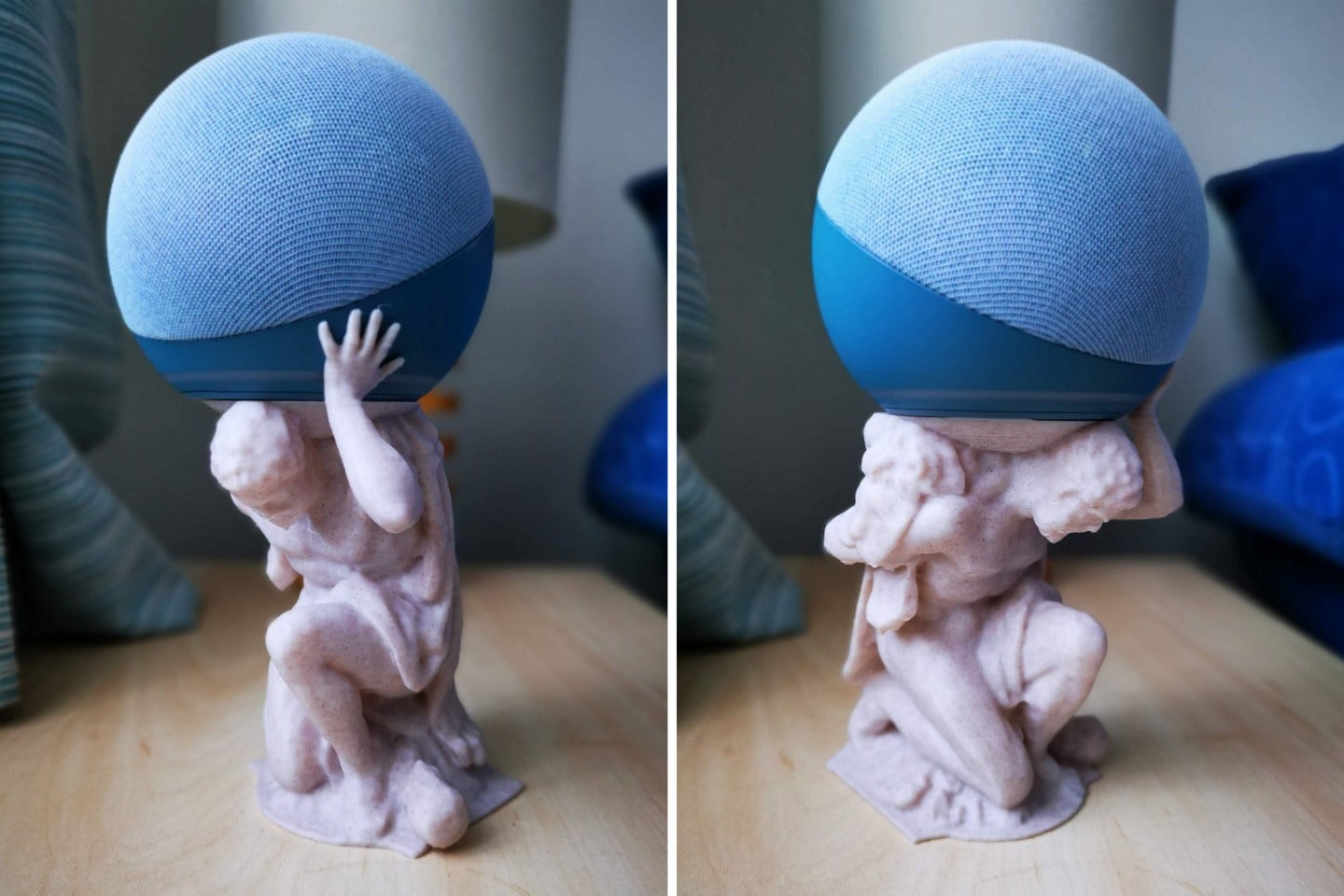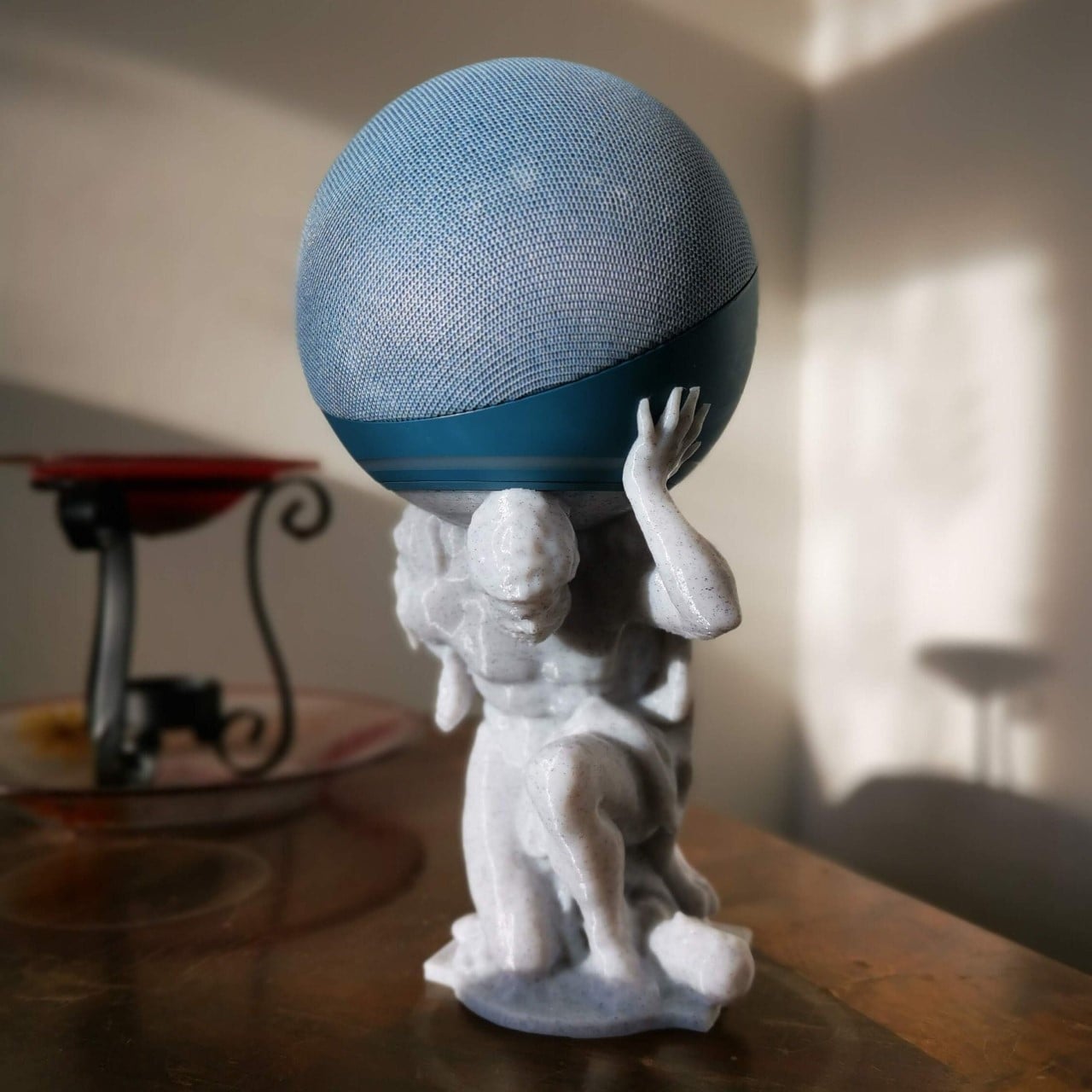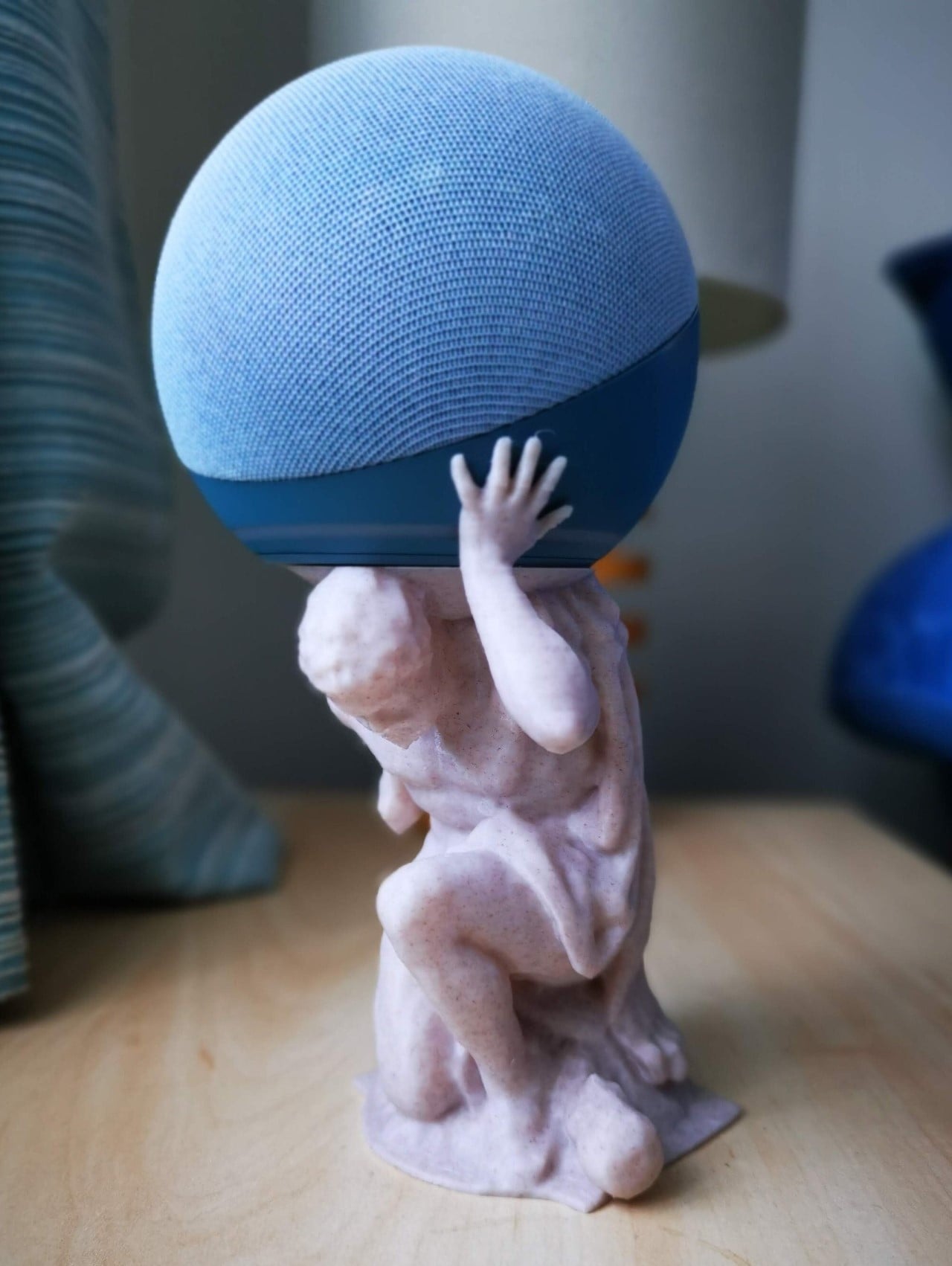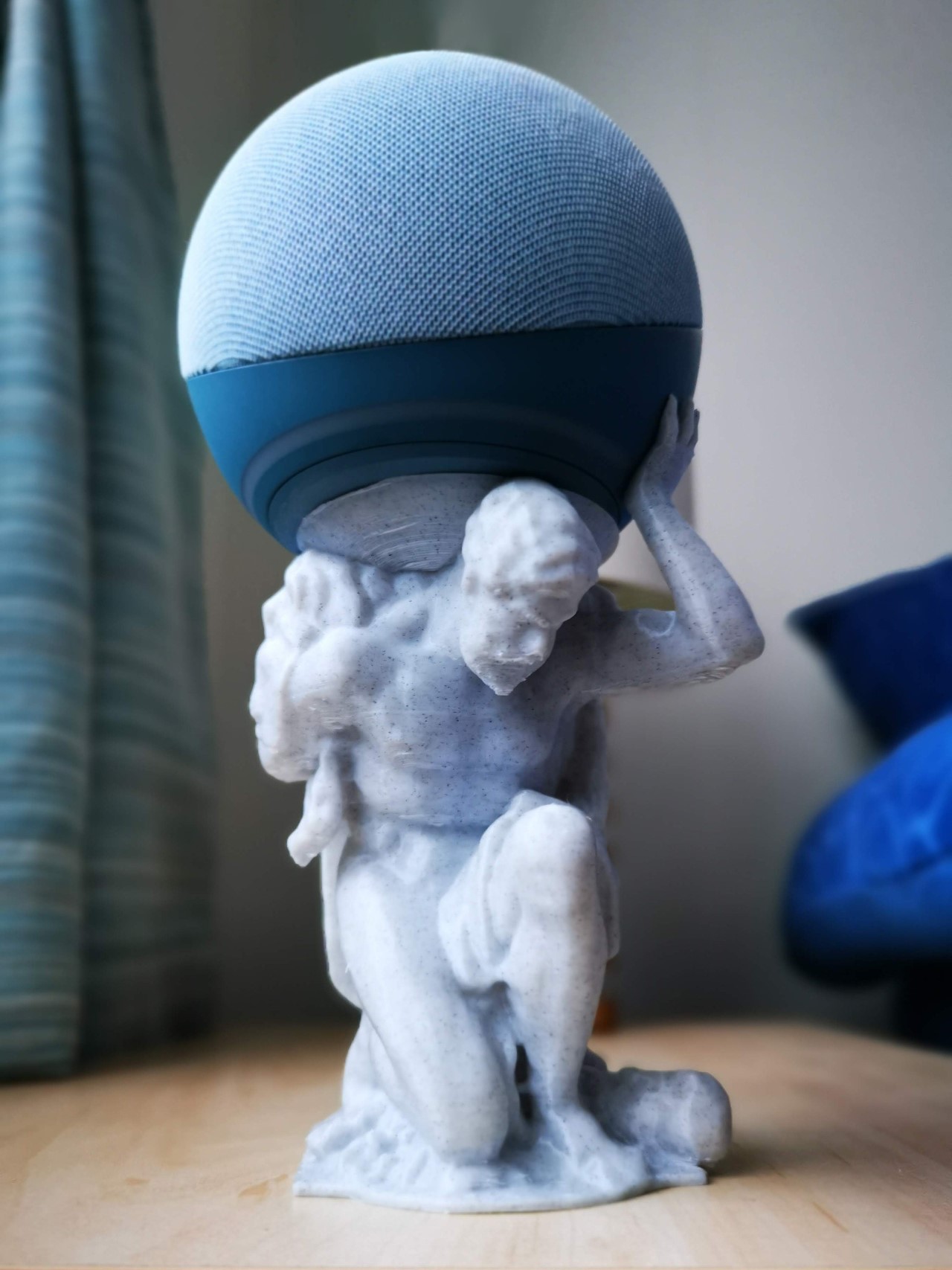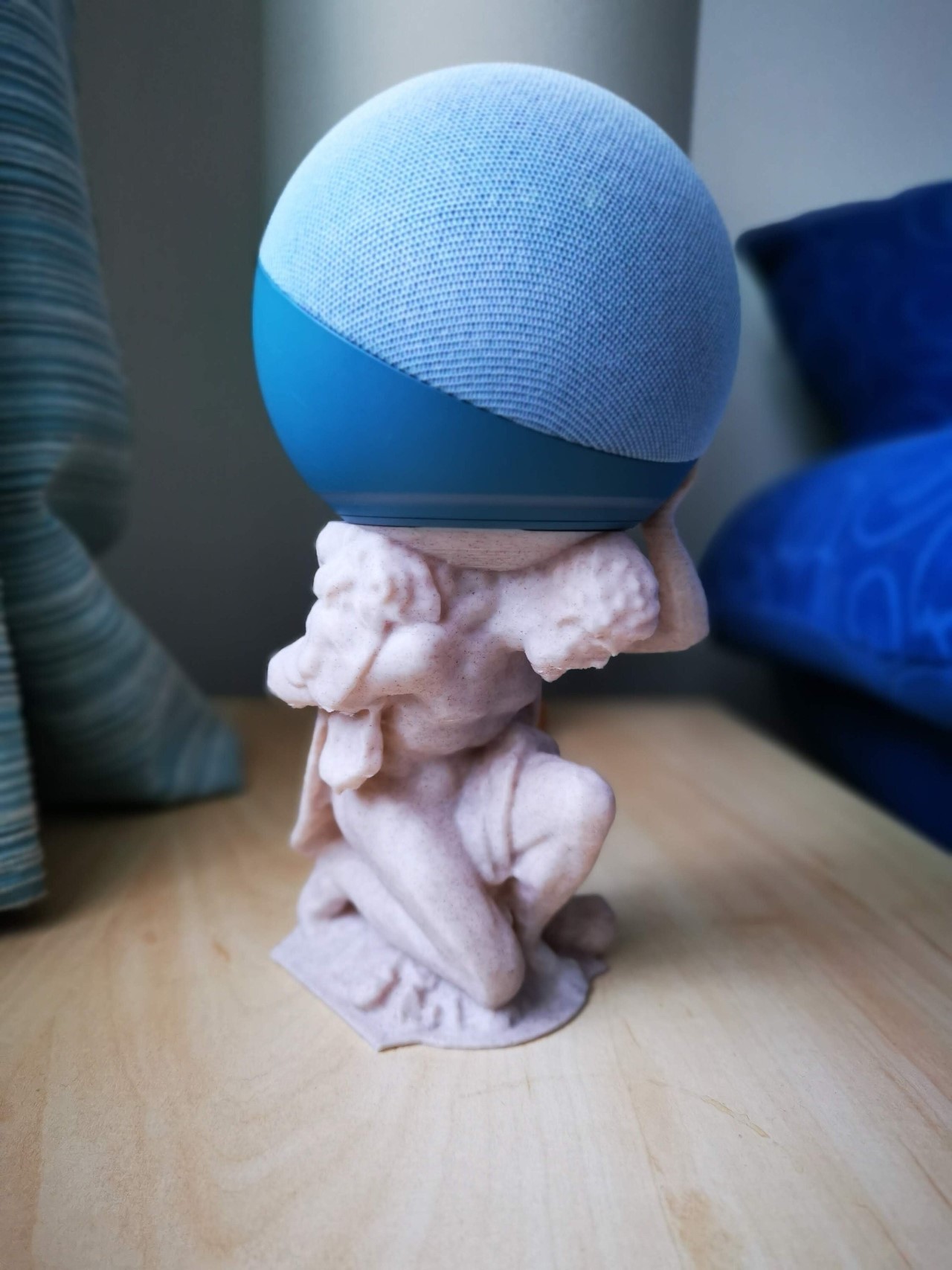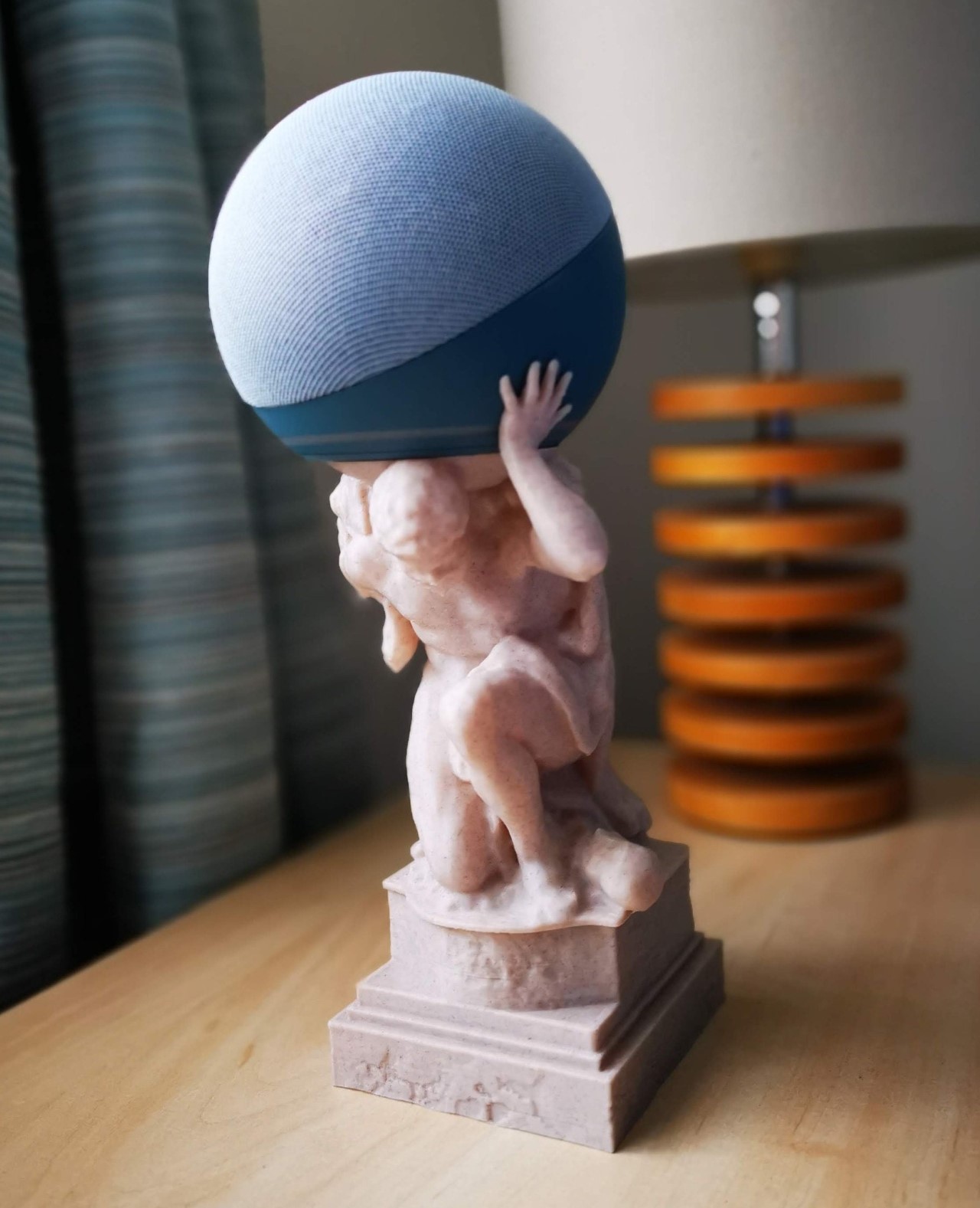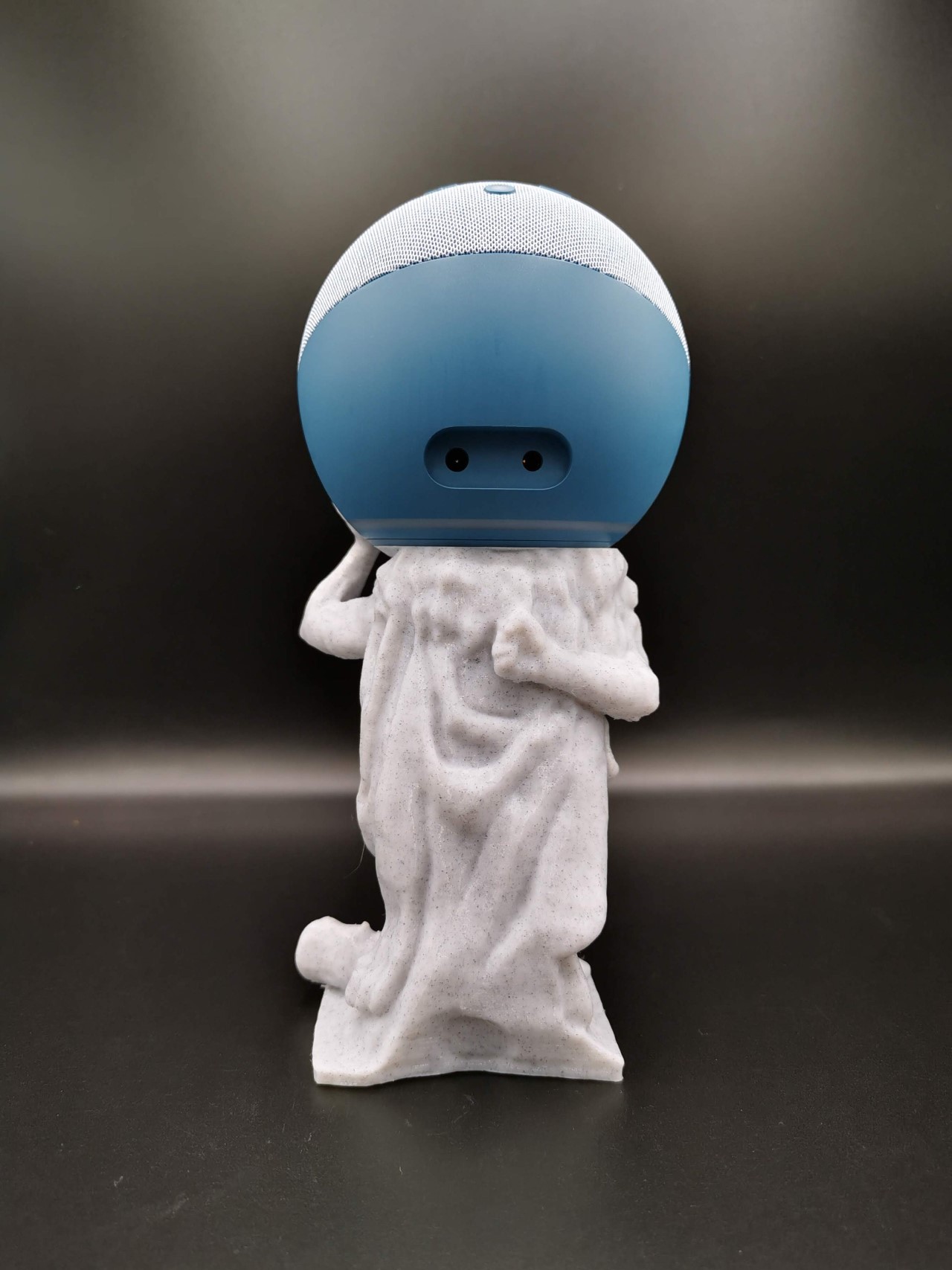Voice assistants are everywhere now – on your phone, in your TV, possibly even in your kitchen appliances. But one of the most common ways that people interact with Siri, Alexa and the Google Assistant is through a smart speaker, and there are now a wide variety of such devices available at a wide variety of price points. There are downsides to having a smart home device that’s always listening for a wake word, as giving more personal information to Amazon, Apple and Google can be a questionable decision. That said, all these companies have made it easier to manage how your data is used — you can opt out of humans reviewing some of your voice queries, and it's also less complicated to manage and erase your history with various digital assistants, too.
The good news is that there's never been a better time to get a smart speaker, particularly if you're a music fan. For all their benefits, the original Amazon Echo and Google Home devices did not sound good. Sonos, on the other hand, made great sounding WiFi-connected speakers, but they lacked any voice-controlled smarts.
That's all changed now. Sonos released its own voice assistant in 2022 and also supports Alexa on its latest speakers. Google and Amazon, meanwhile, made massive improvements in sound quality with recent speakers. Even lower-end models like the Echo Dot and Nest Mini sound much better than earlier iterations. With the growing popularity of these speakers, there are now more options than ever. Let’s walk through our choices for the best smart speakers at different price points and for different uses.
Picking an assistant
The first thing most people should do is decide what voice assistant they want to use. Google Assistant and Amazon's Alexa are both well-supported options that are continually evolving, with new features added at a steady clip. A few years ago, Alexa worked with more smart home devices, but at this point, basically any smart device worth buying works with both.
It's mostly a matter of personal preference. If you already use Google Assistant on your Android phone, it makes sense to stick with that. But while Alexa isn’t quite as good at answering general knowledge questions, it syncs just fine with things like calendars from your Google account. And it works with perhaps the widest variety of smart home devices, as well. If you’ve never used Alexa or Google Assistant, you can download their apps to your smart phone and spend some time testing them out before buying a speaker.
If you buy a Sonos device with a microphone, you can also use the company's own voice assistant, voiced by Giancarlo Esposito. It's focused purely on music control, so you won't use it to do things like send messages or ask the weather forecast. But as a music assistant, Sonos Voice Control is generally quite fast and reliable.
As for Apple, you won’t be surprised to learn the HomePod and HomePod mini are the only Siri-compatible speakers on the market. Siri has a reputation for not being as smart as Alexa or Google Assistant, but it’s totally capable of handling common voice queries like answering questions, controlling smart home devices, sending messages, making calls and playing music. Technically, Siri and Apple’s HomeKit technology doesn’t work with as many smart home devices as the competition, but it’s not hard to find compatible gear. And Apple has most definitely improved Siri’s capabilities over the last couple years, with handy features like and Intercom tool and routines that take advantage of the built-in temperature sensor in the HomePod and HomePod Mini.
Best smart speaker under $50: Amazon Echo Dot
Most people's entry point into the smart speaker world will not be an expensive device. Amazon's fourth-generation Echo Dot and Google's Nest Mini are the most obvious places to start for two important reasons. One, they're cheap: Both the Nest Mini and Echo Dost cost $50. Two, they're capable. Despite the low price, these speakers can do virtually the same things as larger and more expensive devices.
The Google Nest Mini was released in late 2019, but Amazon just refreshed the Echo Dot last year. The Echo Dot is the best small smart speaker for most people. Amazon keeps improving the audio quality across its Echo device line, and the Echo Dot is no exception. It produces much louder and clearer audio than I’d expect from a $50 speaker. The Nest Mini doesn’t sound bad, and it’s perfectly fine for listening in the bedroom while getting ready for the day, but the Echo Dot is a better all-purpose music listening device.
From a design perspective, Amazon broke the mold with the latest Echo Dot. Instead of a small puck like the Nest Mini, the new Dot is shaped like a little globe. It’s much bigger than the Nest Mini, but that size gives it room for higher-end audio components. The Dot keeps the handy physical volume buttons and mute switch on top, along with a button to activate Alexa's voice control. While the Dot doesn’t look as sleek as the Nest Mini, having physical buttons makes it easier to adjust volume and mute the mic. I do wish the Dot had a way to physically pause music; on the Nest Mini, if you tap the middle of the device, the music stops.
Another benefit the Amazon Echo Dot has over the Google Nest Mini is its 3.5mm audio out jack, which means you can plug it into other speakers and instantly upgrade the audio quality. When you do that, you can ask Alexa to stream music, and it'll output to whatever speaker you have connected. That'll help you get more mileage out of the Dot in the long run. The Nest Mini answers with a handy wall mount, for people who want to keep their counter or shelf clear. The Echo Dot’s new bulbous form is definitely not suited to this, so if you want a speaker you can really hide, the Nest Mini is probably the better choice.
Overall, the Dot is the best choice for most people, but I wouldn't hesitate to recommend the Nest Mini, either. I generally prefer using Google Assistant over Alexa, and anyone who feels the same should go ahead and get the Nest Mini. The Dot does sound notably better, so if you plan to listen to audio on a regular basis, that’s probably the way to go. But if you only plan to use it for a quick song or podcast when you’re getting ready in the morning, just pick your favorite assistant and go from there.
Best smart speaker under $100: Amazon Echo
Amazon, Apple and Google all have $100 smart speakers: the fourth-generation Echo, the HomePod mini and the Nest Audio, respectively. All three companies claim superior audio quality, so for lots of people these speakers will be the sweet spot between small speakers like the Echo Dot and Nest Mini and bigger, more expensive models like the Sonos Era 100.
Once again, Amazon punches above its weight. Like the Dot, the latest Echo is totally redesigned and the new internals were made with music in mind. It combines a three-inch woofer with two 0.8-inch tweeters — a more advanced setup than either the Nest Audio or HomePod mini. (The Google Nest Audio uses a three-inch woofer but only a single 0.75-inch tweeter, while the Apple HomePod mini makes do with a single “full range” driver and two passive radiators.)
In practice, this means the Echo is noticeably louder than either the Nest Audio or HomePod mini and much better suited to filling a large room than the competition. It also delivers an impressive bass thump and powerful mid-range frequencies. In fact, my main complaint with the speaker is that highs aren’t quite crisp enough. Compare the Echo to a Era 100 and the 100 sounds much more lively, while the Echo comes off a bit muddy. Then again, the 100 costs more than twice as much as the Echo.
While the Echo may beat the Nest Audio and HomePod mini on volume and bass, Google and Apple’s speakers are not bad options. The HomePod mini is the quietest of the three speakers, but it still sounds balanced across the entire audio spectrum. The bass isn’t too assertive, but there’s more presence than I would have expected given its tiny size (it’s by far the smallest of these three speakers).
And it has a few nice perks if you’re using an iPhone 11 or newer. Thanks to the U1 “ultra-wideband” chip in recent iPhones, the HomePod mini can tell when there’s a phone near it, which makes handing off music from your phone to the speaker (or vice versa) quite simple. Playback controls for the HomePod mini will automatically pop up as well, and your phone’s lock screen will display music suggestions if the speaker isn’t currently playing. Setup is also dead-simple — just bring an iPhone or iPad near the speaker and it’ll automatically start the process.
Google’s Nest Audio is also quite pleasant to listen to. It’s a little louder than the HomePod mini, and has stronger bass, to boot. It doesn’t have the same overall power and presence that the Echo does, but for $100 it’s a well-balanced speaker that should serve most people’s needs.
All three of these speakers support stereo pairing as well, if you want more volume or crave a more immersive experience. For $200, two Echoes will fill a large room with high-quality sound and enough bass to power a party. A pair of HomePod mini or Nest Audio speakers aren’t quite as powerful, but it makes for a great upgrade if you’re a more avid listener. A pair of Nest Audio or HomePod mini speakers sounded great on my desk during the workday. I don’t need overwhelming volume but can appreciate the stereo separation. And two of those speakers together can easily power a larger living space, although the Echo is the better choice if volume is a priority.
Here too, I think that picking the assistant that works best in your house and with your other gadgets is probably the most important factor — but given Alexa’s ubiquity and the new Echo’s superior sound quality, it’s the best smart speaker at this price point.
Best midrange smart speaker: Sonos Era 100
If you have more than a passing interest in music, the Echo Dot and Nest Mini aren't really going to cut it. Spending more money to upgrade to a speaker designed with audio quality in mind is one of the best decisions I've made. For years, I didn't have a proper home music solution, but in the end the modest investment has made my life much more pleasant.
For years, the Sonos One has been a favorite of mine, combining a reasonable price with good sound quality and a plethora of useful features like easy multi-room audio, stereo pairing and compatibility with tons of services. This year, Sonos replaced the One with the Era 100, a $250 speaker that is an improvement in almost every way you can think of. Most importantly, it uses a new speaker array that includes two tweeters instead of just one as well as a woofer that’s 25 percent bigger. The end result is that the Era 100 handily bests the One in sound quality, with impressive bass, surprisingly huge volume and increased high-end clarity thanks to the additional tweeter.
There are a lot of other improvements beyond just sound quality. The Era 100 uses its built-in microphones for much easier Trueplay tuning, which optimizes the speaker’s output based on where you place it. Previously, you had to use an iPhone and walk around the room waving the phone to optimize your Sonos speaker, but now the process is much simpler. The Era 100 also includes line-in via a USB-C port and also has Bluetooth for when you just want to quickly connect a device to the speaker. It’s a bummer that you need to buy an adapter to hook up a turntable or other audio equipment to the Era 100, but since the One didn’t support line-in at all, I’m still glad it’s an option.
There are a handful of other small but solid improvements, like redesigned controls on the top that make it easier to skip tracks and a mic mute switch that cuts the power to the mic for extra security. Like the One, you can set up Alexa or the Sonos voice assistant here, but the Era 100 doesn’t support the Google Assistant – so if you were previously using a Sonos speaker and relied on Google, you’re unfortunately out of luck here. Other than that one change, though, the Era 100 is an excellent all-around performer. It’s a great speaker on its own and is also a great starting point if you want to build a multi-room audio setup.
Amazon’s Echo Studio remains an excellent-sounding speaker as well, and at $199 it’s a good bit cheaper than the Era 100 as well. If you want to save some cash or already have a bunch of other Echo devices, it makes sense as a speaker for higher-quality music playback. But given that it’ll be four years old this fall, I think it makes sense to opt for a newer device that’ll get longer support and updates.
Best smart speaker for music lovers: Sonos Five
As nice as the Era 100 and Echo Studio are, there's only so much you can get out of them. If you crave more bass, clarity and stereo separation, the $550 Sonos Five is one of our favorite pure music speakers. It has many of the conveniences in the Era 100 and sounds significantly better than any other Sonos speaker. It also sounds much better than the Echo Studio and anything Google is currently selling.
That said, the Five stretches our definition of a smart speaker here because it doesn't have a built-in voice assistant. But it's so good at music playback that it's worth recommending you pick one up along with an Echo Dot or Nest Mini. Both of those speakers work with Sonos, so you can use voice commands to control the Five just as you would a dedicated Alexa or Google Assistant device. Sonos also refreshed the speaker two years ago with a new wireless radio as well as more memory and a faster processor. This means it should stay current and work with future Sonos software updates for years to come.
Since we're talking "best" here, I'm going to go ahead and recommend that true music junkies splash out on two Five speakers and pair them in stereo. Put simply, it's the most enjoyable experience I've had listening to music in years; I found myself picking up new details while listening to albums I've heard over and over again. It's a wonderful experience and worth saving for if you're a music lover. I didn't know what I was missing until I tried the Five.
Sonos also just released the Era 300, a $450 speaker that supports Dolby Atmos spatial audio from Apple Music and Amazon Music Unlimited. I’ve found that the quality of spatial audio mixes can be very hit or miss, but the good news is that the Era 300 sounds outstanding whether it’s playing back Atmos content or just standard tracks. It’s not quite as good as the Sonos Five, but it does have built-in microphones for voice assistants and easy Trueplay tuning as well as Bluetooth and the redesigned controls on the Era 100. Again, the main downside is that Google Assistant isn’t supported here.
Finally, if you’re an Apple Music user or have a lot of Apple hardware in your home, the second-generation HomePod is definitely worth considering. At $300, it’s a lot cheaper than these Sonos speakers but supports spatial audio like the Era 300. The Era 300 and Sonos Five are better speakers overall (and certainly much louder), but there's a lot to like about the HomePod’s audio quality at its price point. It’s a clear, crisp vocal-forward speaker, and its design and software processing does a great job of making music sound like it’s all around you, even if you’re not playing back Dolby Atmos tracks.
Best portable smart speaker: Sonos Roam
While many people will be happy with a few speakers strategically placed throughout their home, you might want something that works outside as well as inside. Fortunately, you can find speakers that pair voice controls and strong music playback performance with portable, weatherproof form factors. For my money, it's hard to beat the Sonos Roam for sheer versatility, not to mention audio quality.
When used inside the home, the Roam works like any other Sonos speaker. It fits in with an existing multi-room Sonos setup, or you can get a pair for stereo playback. Like most other Sonos speakers, it works with the Sonos Voice Assistant, Google Assistant or Amazon Alexa, and it supports essentially every major music service available. It sounds very good given its tiny size; it’s quieter and not quite as clear as the Sonos One or the Era 100, but it still packs a surprising bass thump and distinct highs.
Since it was designed with on-the-go usage in mind, the Roam has a battery and Bluetooth so you can take it anywhere and use it far away from your WiFi network. And its diminutive size makes it easy to take it everywhere, both around the house and out and about. It’s also the first Sonos speaker that is fully waterproof, as well as dust- and drop-resistant, so you shouldn’t worry about taking it to the pool or beach.
The Roam gets about 10 hours of battery life, whether you're on WiFI or Bluetooth. There are other portable speakers that last longer, so if you’re really going to push the battery you might be better served by another option.
Sonos also has another portable option, the Move. It’s much larger and louder than the Roam and has better sound quality, which it should given that it costs $400. But, rumors indicate Sonos is getting ready to replace it this fall with a new model. With that in mind, I’d recommend most people interested in a speaker like this wait to see what Sonos has coming up – $400 is a lot of money to spend on hardware that’s about to be replaced.
A better choice than the Move, unless you already have other Sonos products, is the $399 Bose Portable Smart speaker. It supports Alexa and Google Assistant commands, and since it can connect to WiFi, you can ask your preferred assistant to play music from Spotify, Amazon Music and other services. On top of that, it produces well-rounded sound, sports an IPX4 design with a convenient carry handle and will last up to 12 hours on a single charge.
Bose also has a good alternative to the Roam. The $149 SoundLink Flex supports Siri and Google Assistant commands, plus it has an IP67 design that's roughly the size of a small clutch bag. It pumps out bright, dynamic sound and can pair with other speakers for stereo sound, too – it's excellent and slightly cheaper than the Roam.
While this guide is all about smart speakers, we'd be remiss if we didn't mention all of the solid portable speakers out there that either have limited smart features or none at all. We have an entire guide to the best portable Bluetooth speakers, so if you’re purely concerned with portability and less about having an ecosystem of connected speakers, there are lots of options worth investigating.
This article originally appeared on Engadget at https://www.engadget.com/best-smart-speakers-151515264.html?src=rss
![]()
![]()
![]()
![]()
![]()
![]()
![]()
![]()
![]()
![]()
![]()
![]()
![]()








